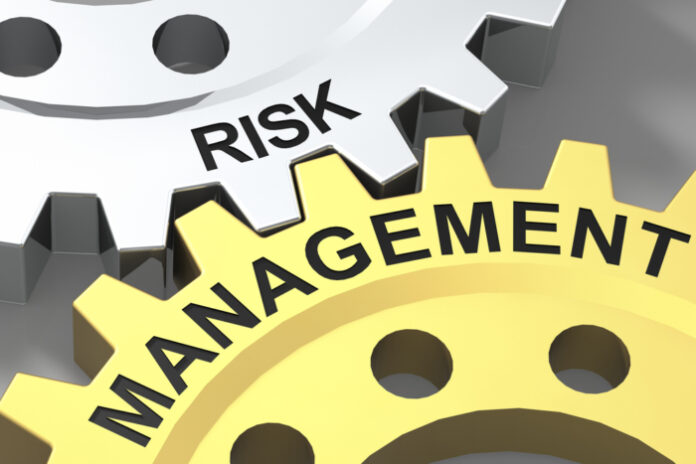Businesses and investors grapple with volatile markets, seeking ways to safeguard their assets and strategies. Here, strategic risk management isn’t just a buzzword; it’s a lifeline. With the digital age revolutionizing traditional methods, understanding the latest tools becomes essential for those striving for stability amidst chaos.
The Digital Shift in Risk Management
The way we approach risk management has undergone significant changes, mirroring the swift rise of digital transformation that we see in many areas of our lives. In the past, risk management was mostly about reacting. It was a process where businesses would wait for problems to pop up and then deal with them. This approach often meant that businesses were always one step behind, trying to catch up with challenges after they had already occurred.
Nowadays, with the power of digital tools and advancements, the strategy has become more about being proactive. These modern tools, driven by groundbreaking digital innovations, have the ability to predict possible problems. They give businesses a kind of crystal ball to see what might be coming their way.
In doing so, companies now have the invaluable opportunity to strengthen their protective measures and prepare themselves even before any potential problem shows up. This new approach is all about being ready and staying ahead of the curve.
Core Digital Instruments for Safety
Risk management’s evolution mirrors the rapid digital transformation seen in almost every industry. Historically, risk management was reactive, often responding to challenges once they emerged. Now, in the digital age, the focus has shifted towards proactive solutions. These tools, propelled by digital innovations, anticipate potential pitfalls, offering businesses the chance to fortify their defenses even before the storm hits.
Data Analytics
Data, in vast quantities, inundates modern businesses daily. However, mere data collection isn’t enough. It’s the analysis, the hunt for patterns, and insights that’s crucial. Fintech risk management relies heavily on data analytics, turning numbers into actionable insights. For businesses, these insights can mean the difference between a failed venture and a successful one, especially when navigating uncertain financial waters.
Predictive Algorithms
Predictive algorithms have emerged as the crystal balls of the finance world. By assessing patterns, these algorithms can forecast market shifts, enabling businesses to brace for impact or capitalize on opportunities. They’re not just about predicting financial downturns but also about strategizing for potential market booms. This is particularly valuable for bank risk management software, ensuring financial institutions remain a step ahead.
The New Wave of Risk Management Tools
Emerging technologies are redefining the way businesses approach financial security. From immutable ledgers to instantaneous alerts, the next generation of tools is paving the way for a more robust and resilient financial ecosystem.
Blockchain
Once only associated with cryptocurrencies, blockchain is now a game-changer across industries. Its decentralized nature ensures transparency and security, making transactions tamper-proof. Especially in fintech risk management, blockchain plays a pivotal role by ensuring each financial transaction’s validity and authenticity, reducing the risks associated with fraud or data breaches.
Real-Time Monitoring Systems
The ability to detect and respond to market shifts instantaneously can be a game-changer. Real-time monitoring systems, essential components in risk management software for banks, offer this advantage. They provide continuous surveillance, ensuring that at the slightest indication of upheaval, businesses can adjust their strategies dynamically, minimizing potential damages.
The Power of Clear Communication
Unexpected events, especially financial crises, can appear suddenly, catching many off guard. During these critical moments, the way we communicate becomes essential, as clear and swift communication can mean the difference between escalation and resolution. It’s not just about sharing information; it’s about ensuring that the message is understood by all involved. Thanks to advancements in technology, digital tools have now made it simpler and faster for people to converse, no matter the distance.
These tools have eliminated many traditional barriers to communication, paving the way for open and transparent discussions among stakeholders. Imagine a bank that needs to relay crucial financial updates to its clients or shareholders eager for the latest news on the health of a company they’ve invested in. Through technology, every participant stays informed. This continuous flow of information helps everyone to be on the same page, promoting joint understanding and encouraging collaborative efforts to tackle challenges.
Expert Partnerships in Risk Management
Venturing into the digital realm, especially with stakes as high as financial security, can be daunting. That’s where a risk management consultancy comes in. These experts bridge the gap between traditional practices and new-age tools, ensuring businesses get the best of both worlds. Collaborating with such consultancies allows businesses to harness technological innovations effectively, maximizing the benefits of digital strategies without being overwhelmed by them.
The financial landscape, with its ups and downs, will always present challenges. However, with the arsenal of digital tools available today, navigating these challenges becomes less about surviving and more about thriving. Whether it’s through strategic risk management or by leveraging the latest bank risk management software, the future looks promising for those ready to embrace the digital wave.















































